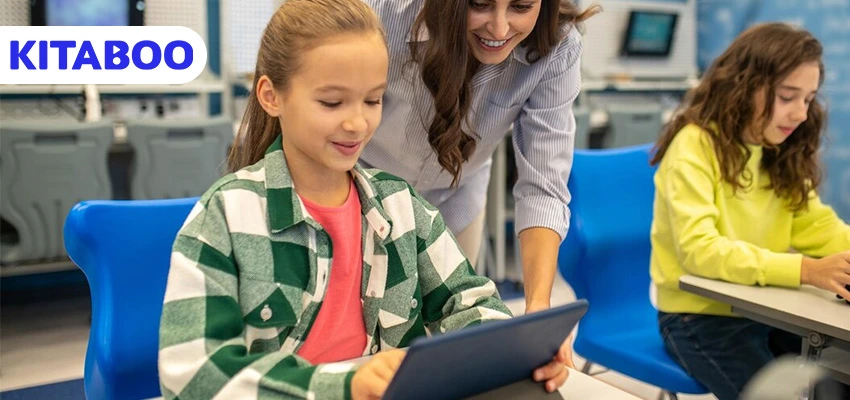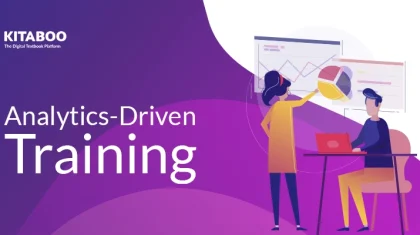
Best Practices for Successful School Onboarding in K12 Digital Publishing
Summarize this blog with your favorite AI:
Today, K12 education is rapidly embracing digital resources. With everything from interactive videos to eBooks at their fingertips, learners can access content like never before.
However, K12 publishers face some challenges. While they create high-quality materials, many struggle to measure how effectively these resources are being used in classrooms. Plus, without the right tools, it can be tough to gather feedback and improve teaching strategies.
That’s where effective school onboarding comes in.
A seamless onboarding process ensures student engagement from the outset and optimizes digital material’s advantages for schools. Digital textbook platforms like KITABOO make this transition easier by supporting both educators and learners in navigating the digital world.
Let’s look at how publishers can help schools succeed in this new era and discuss best practices for a smooth school onboarding in K12 digital publishing.
Table of Contents:
I. Contingencies Faced by K12 Publishers in School Onboarding
II. Best Practices for Effective School Onboarding
- Early Collaboration with Schools
- Customized Training Programs
- Provide Easy-to-Use Resources
- Offer Continuous Support and Feedback Loops
III. Conclusion: Embracing the Future of K12 Digital Publishing
Contingencies Faced by K12 Publishers in School Onboarding
As K12 publishers, you face unique challenges when onboarding schools with digital content. Ensuring the smooth integration of digital resources into current classroom procedures has significant challenges.
- Since teachers are accustomed to using old methods, it is crucial to show them how new content can enhance the teaching process without upsetting long-standing practices.
- Engaging educators and administrators in the onboarding process can be cumbersome. Without their buy-in, even the best resources can fall flat. To overcome this resistance, it’s crucial to promote collaboration and communicate the value of digital content effectively.
- The diverse digital literacy levels among schools can complicate matters further. Some educators may be tech-savvy, while others may struggle with basic digital tools.
Platforms with user-friendly and intuitive interfaces, such as KITABOO, can make the onboarding process simpler. KITABOO gives you the ability to empower both teachers and students by offering clear advice and support.
Best Practices for Effective School Onboarding
In HolonIQ’s 2023 survey on digital transformation in K12, a striking 65% of K12 school leaders identified the integration of digital resources as essential for the future of education.
To meet this growing demand, K12 publishers must adopt best practices that facilitate effective school onboarding. Here are some:
1. Early Collaboration with Schools
When it comes to properly onboarding digital resources, K12 publishers can transform the game by collaborating with schools early on. By involving educators and administrators early on, you can benefit from their knowledge and experiences in creating content that really fulfills their needs. A collaboration as such guarantees that content development is in line with the educational objectives of the school and pedagogical goals.
Additionally, collaborating early helps identify potential challenges in the onboarding process, such as technical limitations or resistance to change. By addressing these issues proactively, you can facilitate smooth school onboarding in K12 publishing.
In essence, prioritizing early collaboration positions K12 publishers as trusted partners in the educational journey, ultimately enhancing the impact of digital resources in the classroom. KITABOO, the world’s leading digital textbook platform is designed to streamline this process, helping you deliver your digital textbooks quickly and efficiently to educators and students.
2. Customized Training Programs
Despite advances in technology, 23 million K12 students still lack sufficient digital infrastructure, therefore highlighting the critical need for customized content development. As K12 publishers, developing customized training sessions is essential to bridge this gap and empower educators.
To begin with, determine each educator’s individual level of digital literacy. This will enable you to design workshops that are specifically tailored to each person’s needs and ensure everyone is comfortable using new digital tools. Next, to increase student engagement, include practical examples and hands-on activities relevant to their classroom settings.
K12 publishers may greatly increase the efficacy of digital content uptake. By providing resources and continual training tailored to an individual’s skill set, they will eventually improve student learning outcomes.
3. Provide Easy-to-Use Resources
An educator who has been using a traditional blackboard for years might find it overwhelming if digital resources are complex and hard to navigate. For K12 publishers, creating easy-to-use resources is essential to ascertain that even the most seasoned educators can embrace digital transformation in K12 education with confidence.
K12 publishers should create intuitive interfaces that enable quick access to materials, similar to the approach taken by the digital textbook platform KITABOO. In order to keep instructors actively engaged in the learning process, they also need to include interactive components like clickable lesson plans, embedded quizzes, and instructional videos.
Furthermore, providing thorough training resources such as FAQs, quick-start manuals, and video tutorials helps alleviate worries about utilizing new technology. When K12 publishers prioritize user-friendly designs and supportive materials, they empower educators and ease the process of school onboarding in K12 digital publishing.
4. Offer Continuous Support and Feedback Loops
K12 publishers need to understand that successful onboarding requires more than just the initial training, even with user-friendly materials.
Technology is always changing, and educators may still encounter difficulties when incorporating digital resources into the classroom. This demands continual support and feedback channels to boost continuous improvement.
- First, implement a responsive support system that educators can easily access when they encounter issues or have questions. This could be a dedicated helpdesk or chat support.
- Next, create regular feedback loops by soliciting input from educators about their experiences with the digital content. Surveys or casual check-ins can be used to learn what’s working and what needs to be improved.
- Finally, offer ongoing training sessions that focus on new features, updates, and innovative teaching strategies.
Conclusion: Embracing the Future of K12 Digital Publishing
Successful school onboarding in K12 digital publishing is about cultivating a dynamic, adaptive ecosystem where technology supports both teaching and learning. For publishers, the goal must be to go beyond content development and delivery and focus on building partnerships with schools that enable long-term growth.
As technological evolution quickens, it is critical to continue being attentive to educators’ changing requirements. Future-proofing digital material will be based on ongoing cooperation and personalization.
Publishers who embed these practices into their onboarding strategies will empower educators to use digital tools confidently, adopt digital transformation in K12 education, and ensure that students benefit from enriched, engaging learning environments.
KITABOO is purpose-built for K12 education. It swiftly and effectively addresses the unique challenges of onboarding schools. Our platform streamlines the process, allowing K12 publishers to deliver digital textbooks efficiently to educators and students.
Talk to us today to learn more!
Also Check:
Discover how a mobile-first training platform can help your organization.
KITABOO is a cloud-based platform to create, deliver & track mobile-first interactive training content.



